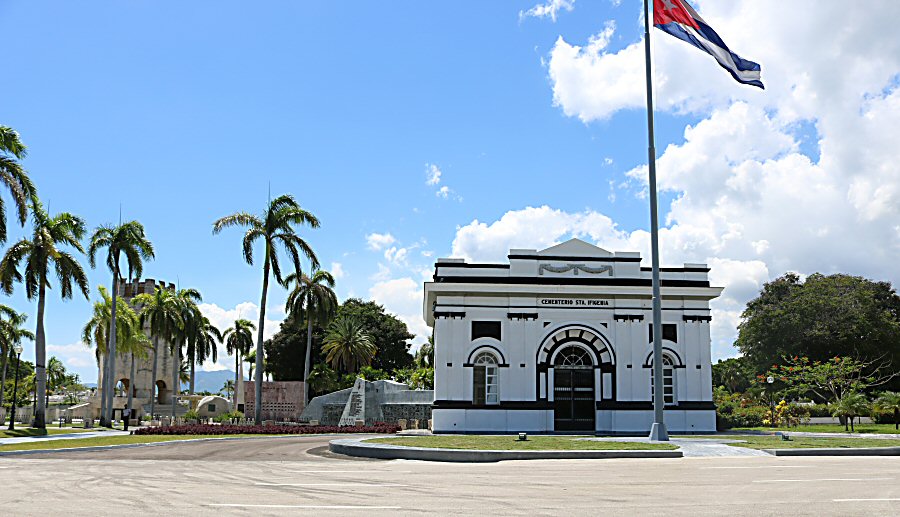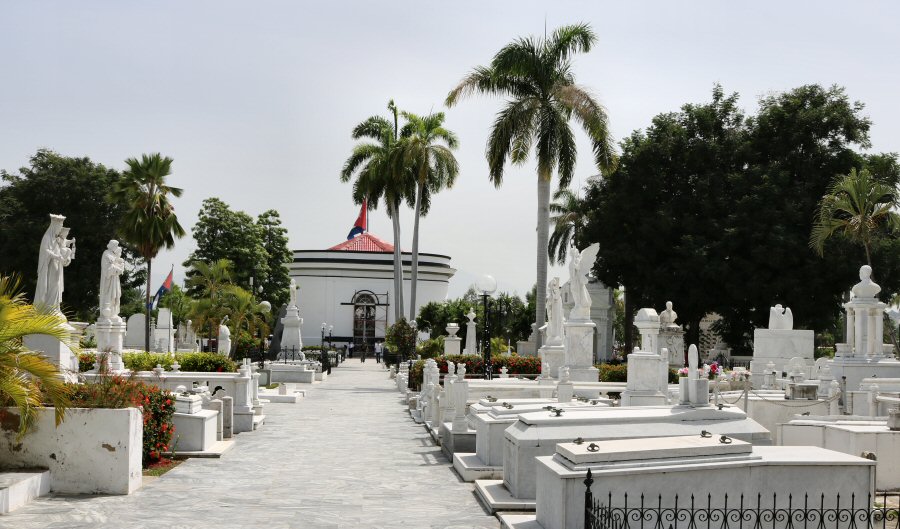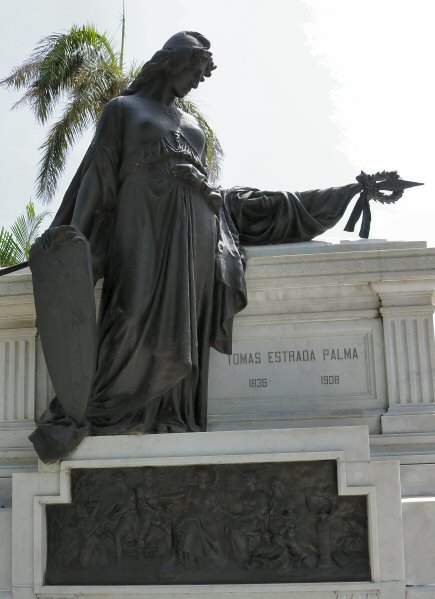Cementerio Santa Ifigenia
lies on the northwest of the city. Its entrance is located at
the intersection of the Avenida Capitán Raúl Perozo with the
Avenida Combet.
Daily 07:00 - 18:00


Until the early 19th century, vast
majority of the burials were taking place in the courtyards of
the churches or inside of them, when the dead person was one of
the military, political or religious figures. The citizens were
charging the spread of some diseases in the city with the
proximity of the burials to their settlements, so that at the
end of the 19th century the Spanish king ordered the
construction of cemeteries far from the urban centers.
Thus, the first cemetery of Santiago
de Cuba was inaugurated in 1826. It was located where Garzon
Avenue runs today. The cemetery was called Cementerio Santa Ana,
getting its name from the church nearby. In 30 years, the
capacity of the cemetery became insufficient due to the quick
growth of the population of the city of Santiago de Cuba;
furthermore, it was essential to avoid the epidemics like
cholera and yellow fever, so that it was decided to build a
bigger cemetery outside of the city. It would also give the
opportunity to accommodate the victims of the War of the
Independence and the simultaneous yellow-fever outbreak. After
those of Cementerio de Espada and Cementerio de Colón that were
built in Havana, General Cemetery of Santa Ifigenia was
inaugurated in 1868 as the third cemetery, officially used in
Cuba. It got its name Santa Ifigenia from the Ethiopian virgin
that was canonized by many miracles and was baptized by Apostle
San Mateo. The first burials took place 2 months after its
opening, although there are gravestones indicating a date prior
to 1868; a fact that proves that these tombs were transferred
from the former cemetery.

Cementerio Santa Ifigenia includes more than 8,000 tombs now. It is the second largest in Cuba after Havana’s Cementerio de Colón, but its prestige bases on the fact that it constitutes a reminder of the last and present history of Cuba by being a resting place of some notable Cubans that took place the struggle for the freedom and the independence of Cuba, such as José Martí, José Maceo and Carlos Manuel de Céspedes, as well as a plethora of santiaguero youth killed in the underground combat against the tyranny of Batista, and some outstanding figures of the Cuban art and the culture. The remains of some international fighters fallen in other countries, lie also in the cemetery. The cemetery is enriched by the authentic monuments that were erected for the memory of illustrious women, like Mariana Grajales Coello (mother of Maceo brothers), Maria Cabrele (wife of Antonio Maceo) and Elvira Cape (Emilio Bacardí Moreau's second wife). Its value does not come only from holding the remains of heroes or renowned figures, but also from its monumentality and magnificence. The site was declared National Monument in 1937 due to the rich historical, architectural, and cultural treasure that it cherishes, and it was ratified as being such by the government in 1979.

